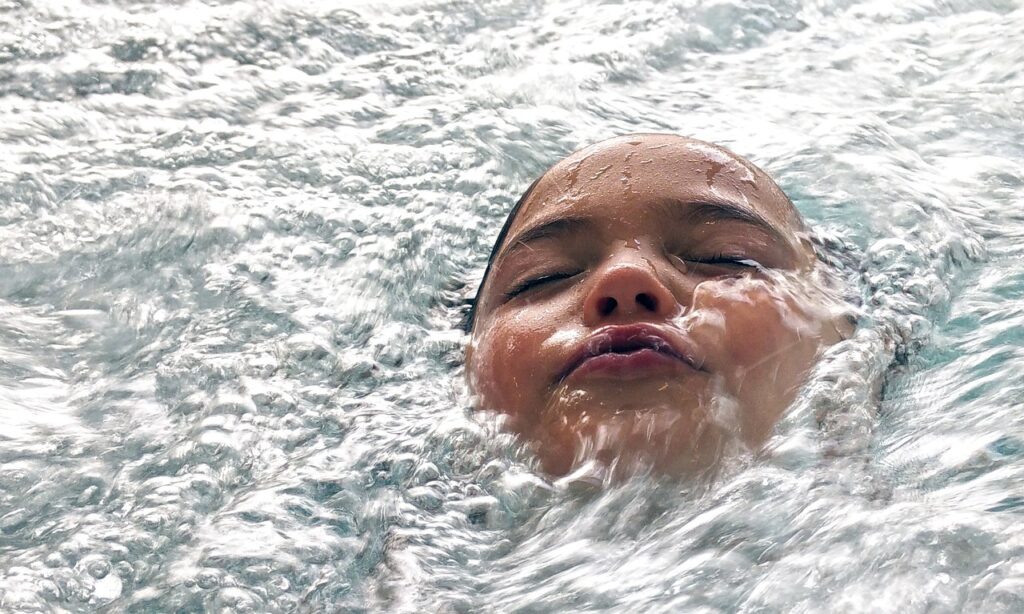Aquatic Occupational Therapy (AOT) is a specialized mode of therapy that an Occupational Therapist can deliver that leverages the benefits of water to enhance outcomes. For occupational therapists and patients alike, understanding the unique advantages and applications of AOT can significantly impact therapeutic practices and patient recovery journeys.
Introduction to Aquatic Occupational Therapy
Aquatic occupational therapy involves using water to facilitate occupational therapy interventions. By utilizing the properties of water such as buoyancy, resistance, and hydrostatic pressure, therapists can create a supportive environment that aids in the rehabilitation process. This approach is particularly beneficial for individuals with conditions that limit mobility or cause pain during traditional land-based therapy. It is also widely used in pediatric occupational therapy for patients with ADHD, autism, sensory processing disorders, and down syndrome.
Unique Benefits of Aquatic Occupational Therapy

The key benefits of aquatic occupational therapy include:
- Reduced Pain and Stress on Joints: The buoyancy of water supports a significant portion of the body weight, reducing stress on joints and pain during exercises.
- Improved Mobility and Strength: Water resistance helps build muscle strength and endurance without the need for weights, which can be particularly advantageous for patients with limited mobility.
- Enhanced Balance and Coordination: The multidirectional resistance in water requires patients to engage stabilizing muscles, thereby improving balance and coordination.
- Psychological Benefits: The calming properties of water can reduce anxiety and promote a sense of well-being, which can be vital for patients dealing with chronic pain or stress-related conditions.
How AOT Differs from Traditional Occupational Therapy
While traditional occupational therapy focuses on helping patients develop, recover, or maintain daily living and work skills through land-based exercises and activities, aquatic occupational therapy offers a unique medium for these interventions. The water environment enables therapeutic activities that may be challenging or impossible on land due to pain, mobility restrictions, or other physical limitations.
The Role of Occupational Therapists in AOT
Occupational therapists who specialize in aquatic therapy undergo additional training to understand how to safely and effectively use water-based environments for therapeutic purposes. They develop personalized treatment plans that incorporate aquatic exercises tailored to each patient’s specific needs and goals.
Specialized Training

To become proficient in aquatic occupational therapy, therapists typically pursue certifications such as the Aquatic Therapy and Rehabilitation Institute (ATRI) certification. This specialized training covers topics like:
- Hydrodynamics: Understanding how water properties affect movement and exercise.
- Therapeutic Techniques: Learning specific aquatic exercises and interventions.
- Safety Protocols: Ensuring patient safety in aquatic environments.
- Patient Assessment: Evaluating patient conditions and determining the suitability of aquatic therapy.
Safety Considerations and Best Practices for AOT Sessions
Safety is paramount in aquatic occupational therapy. Therapists must adhere to strict guidelines to ensure a safe and effective therapeutic experience. Key safety considerations include:
- Proper Screening: Assessing patients for contraindications such as open wounds, severe cardiac conditions, or contagious infections.
- Water Temperature: Maintaining an appropriate water temperature that is comfortable and conducive to therapy.
- Supervision: Continuous monitoring of patients during sessions to prevent accidents and ensure proper technique.
- Emergency Preparedness: Having emergency protocols in place, including lifeguard presence and first aid equipment.
Current Research and Future Trends in AOT
Research in aquatic occupational therapy is ongoing, with studies exploring its efficacy in treating various conditions such as arthritis, cerebral palsy, and post-surgical recovery. Emerging trends in AOT include:
- Technological Integration: Incorporating underwater treadmills, resistance devices, and virtual reality for enhanced therapeutic experiences.
- Holistic Approaches: Combining AOT with other therapeutic modalities like mindfulness and relaxation techniques to address both physical and psychological aspects of rehabilitation.
- Community Programs: Expanding access to AOT through community-based programs and partnerships with local health facilities.
Conclusion
Aquatic occupational therapy offers a dynamic and supportive environment that can significantly enhance the therapeutic process. Its unique benefits, combined with the specialized skills of trained occupational therapists, make it a valuable addition to traditional therapy approaches. For patients and therapists looking to explore new avenues for rehabilitation, AOT provides a promising and effective option.
FAQs About Aquatic Occupational Therapy
What conditions can benefit from aquatic occupational therapy?
Aquatic occupational therapy can be beneficial for a variety of conditions including but not limited to arthritis, cerebral palsy, ADHD, autism, sensory processing disorders, down syndrome, fibromyalgia, post-surgical recovery, and chronic pain.
How is the water temperature regulated during AOT sessions?
Water temperature is carefully regulated to provide a comfortable and therapeutic environment, typically between 92-96°F (33-35°C).
Are there any risks associated with aquatic occupational therapy?
While generally safe, AOT may not be suitable for individuals with certain conditions such as severe cardiac issues, open wounds, or contagious infections. Proper screening and supervision are essential.
Do I need to know how to swim to participate in AOT?
No, you do not need to know how to swim. Aquatic occupational therapy is conducted in a controlled environment where the water depth is appropriate for each patient’s comfort and safety.
How often should one participate in AOT sessions?
The frequency of sessions depends on individual therapeutic goals and needs. Your occupational therapist will develop a personalized plan that outlines the recommended frequency and duration of sessions. By embracing the benefits of aquatic occupational therapy, patients and therapists alike can make waves in the world of rehabilitation, achieving remarkable outcomes through the healing power of water.
Important Notice
The information provided on this website is intended for informational purposes only and should not be construed as professional medical advice. Always seek the guidance of your physician or other qualified healthcare provider with any questions you may have regarding a medical condition or treatment.
Recently Featured OT Insider Articles
Introduction to Occupational Therapy for Students
Discover key insights and foundational knowledge for students entering the field of occupational therapy.
Effective DIY Home Exercises for Occupational Therapy at Home
Learn practical home exercises that can enhance your occupational therapy regimen and accelerate your recovery process.
Building a Safer Tomorrow: Fall Prevention Strategies with Occupational Therapy
Equip yourself with effective fall prevention strategies designed to ensure safety and enhance mobility with the guidance of occupational therapy.
5 Essential Occupational Therapy Exercises for Stroke Recovery
Find out about essential exercises that play a crucial role in stroke recovery and help regain your strength and independence.
Maximizing Abilities: How Speech and Occupational Therapy Work Together
Explore the collaborative dynamic between speech and occupational therapy and their combined impact on enhancing patient abilities.
Beating Workplace Burnout: Practical Tips for a Balanced Work Life
Discover actionable strategies to maintain a healthy work-life balance and effectively combat workplace burnout.
References:
Becker, B. E. (2009). Aquatic Therapy: Scientific Foundations and Clinical Rehabilitation Applications. PM&R, 1(9), 859-872. https://doi.org/10.1016/j.pmrj.2009.05.017
Broach, E., & Dattilo, J. (1996). The Benefits of Aquatic Therapy in the Treatment of Rheumatoid Arthritis. Therapeutic Recreation Journal, 30(3), 213-229.
Kesiktas, N., Paker, N., Erdogan, N., Gülsen, G., Biçki, D., & Yilmaz, H. (2004). The Use of Hydrotherapy for the Management of Spasticity. Neurorehabilitation and Neural Repair, 18(4), 268-273. https://doi.org/10.1177/0888439004270069
Aquatic Therapy and Rehabilitation Institute, Inc. (2021). ATRI Certification Programs. Retrieved from https://www.atri.org/Certification.htm
Harrison, R. A., Hillman, M., & Bulstrode, S. (1992). Loading of the Lower Limb When Walking Partially Immersed: Implications for Clinical Practice. Physiotherapy, 78(3), 164-166. https://doi.org/10.1016/S0031-9406(10)61318-2
Seminars in Arthritis and Rheumatism. (2014). Efficacy of Water-Based Exercises and Swimming in Musculoskeletal Conditions. Seminars in Arthritis and Rheumatism, 44(6), 761-772. https://doi.org/10.1016/j.semarthrit.2014.02.005
American Occupational Therapy Association. (2018). The Role of Occupational Therapy in Rehabilitation of Individuals with Chronic Conditions. Retrieved from https://www.aota.org/~/media/Corporate/Files/AboutOT/Professionals/WhatIsOT/HW/Facts/Chronic-Care-Fact-Sheet.pdf
